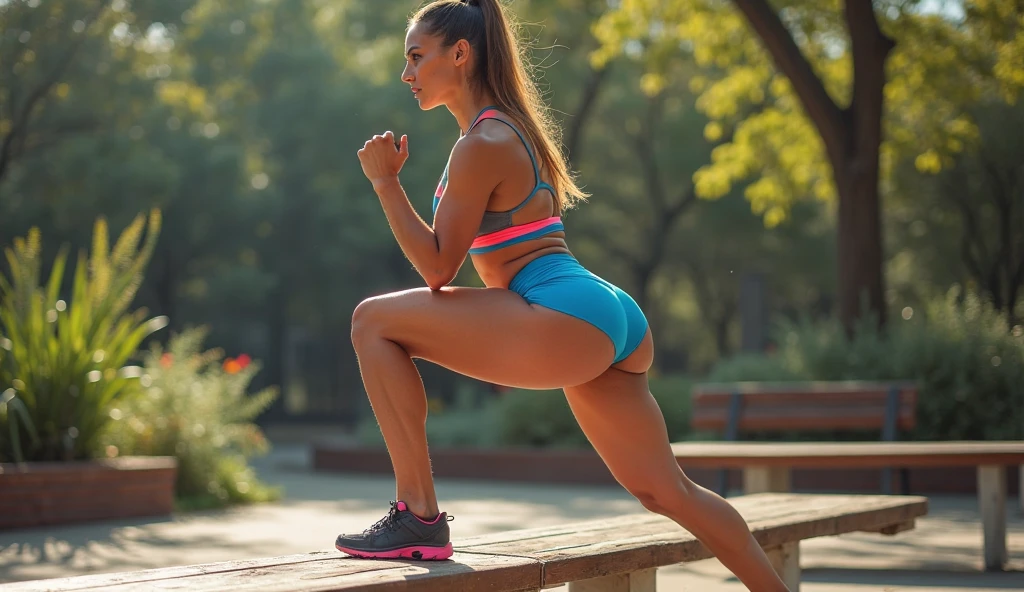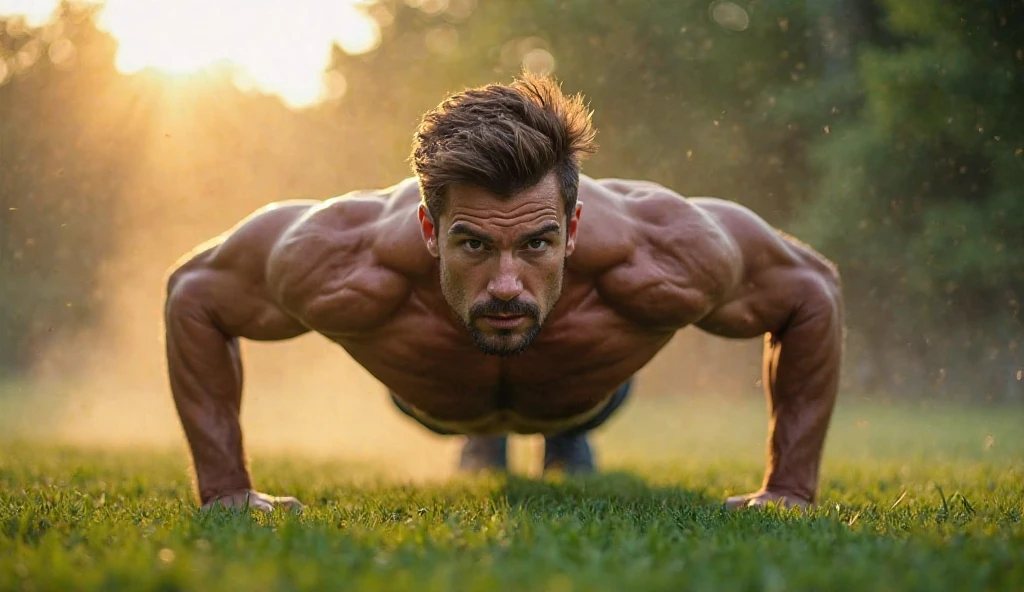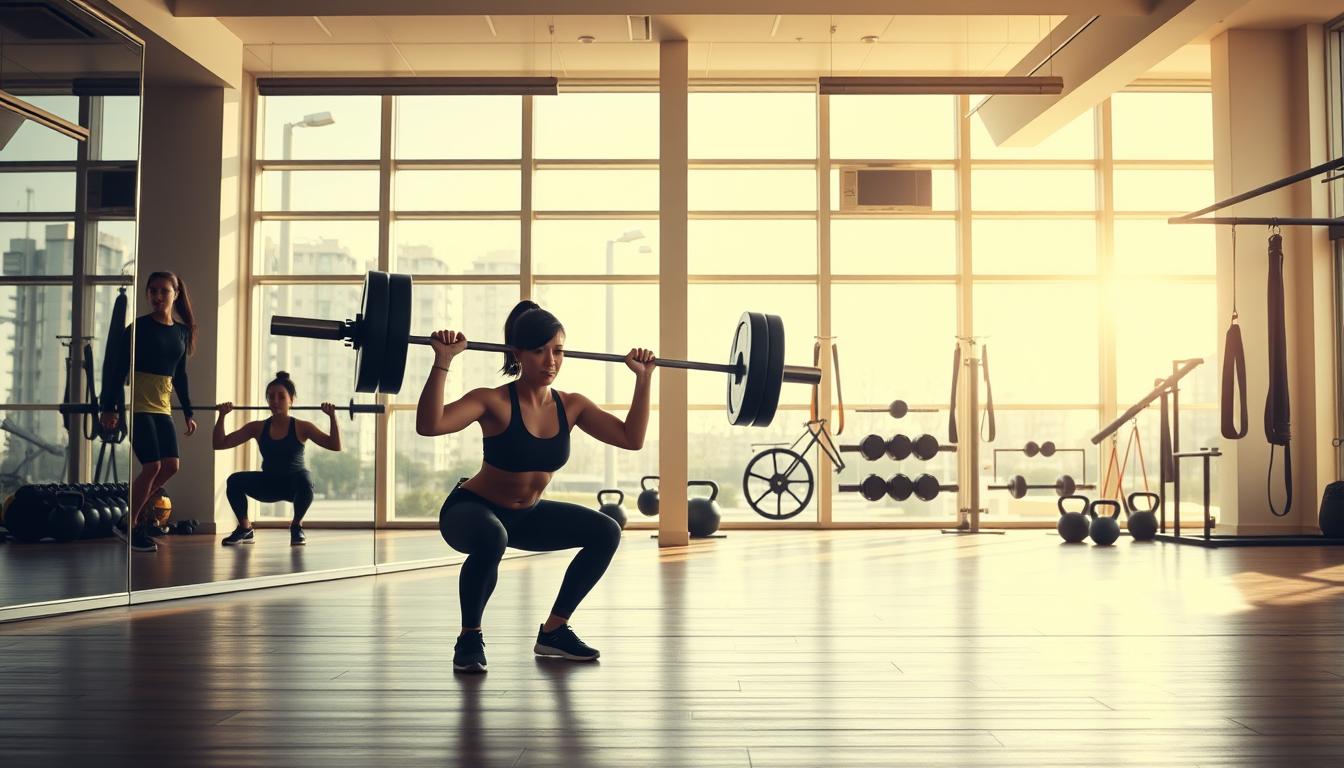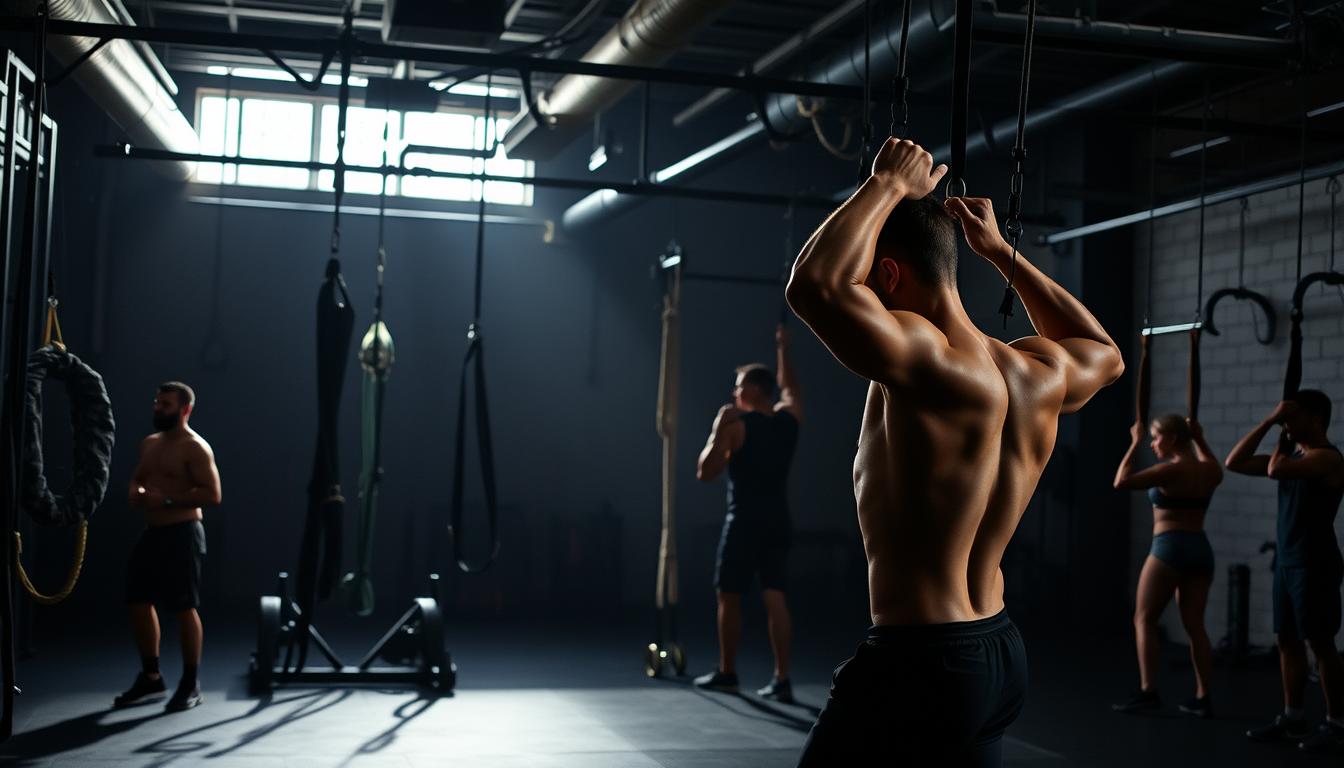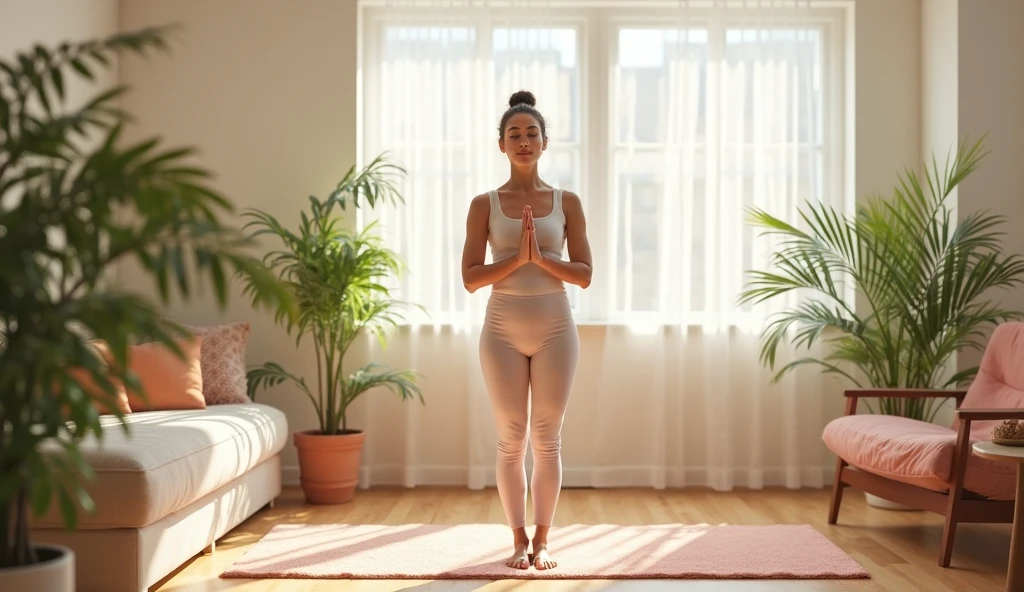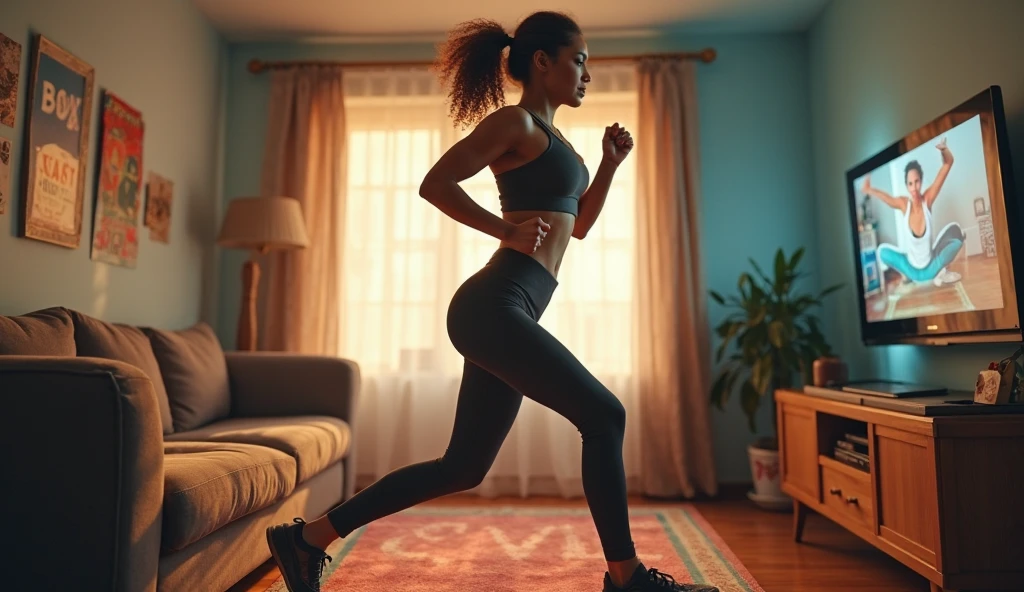Have you ever felt a twinge in your lower back after a long day of sitting? Or struggled with stability during a run or workout? I’ve been there too. It wasn’t until I started focusing on my glute muscles that I noticed a significant change in my strength and posture.
The glutes are the largest muscle group in the body, responsible for powering movements like standing, climbing stairs, and even walking. Yet, they’re often overlooked in fitness routines. Strengthening these muscles not only enhances athletic performance but also reduces the risk of injury and improves daily movement efficiency.
In this article, I’ll share my personal approach to building a strong, toned backside. You’ll learn how targeted exercises can improve posture, reduce pain, and boost overall fitness. Whether you’re a beginner or a seasoned athlete, this guide will help you unlock the full potential of your glutes.
Key Takeaways
- The glutes are essential for movement, stability, and injury prevention.
- Strengthening these muscles can improve posture and reduce lower back pain.
- Targeted exercises enhance athletic performance and daily movement efficiency.
- A well-rounded routine should engage all three glute muscles: maximus, medius, and minimus.
- Consistency is key to achieving a strong, toned backside.
Introduction to My Glute Training Journey
My journey into strengthening my lower body began with a simple realization about muscle balance. I noticed that my legs felt uneven during runs, and my knee would occasionally ache after long walks. It wasn’t until I started focusing on my lower body that I understood how interconnected these muscles are.
Early on, I learned that the foot plays a crucial role in stability. By improving my lower body strength, I could support my knee and reduce discomfort. This was a turning point in my fitness routine. I began incorporating exercises that targeted my lower body, and the results were transformative.
Over time, my understanding of muscle balance deepened. I realized that neglecting certain areas could lead to imbalances and even injuries. This awareness shaped my approach to training. I started prioritizing exercises that engaged my entire lower body, ensuring each leg worked equally.
The evolution of my routine taught me the importance of consistency. By focusing on my lower body, I not only improved my strength but also enhanced my overall athletic performance. It’s a journey that continues to inspire me to learn and grow.
Understanding the Glute Muscles: Anatomy and Function
Understanding the anatomy of the glutes is key to unlocking their full potential. These muscles are not just one unit but a trio—gluteus maximus, medius, and minimus—each with distinct roles. By learning how they work, you can design a more effective routine.
Gluteus Maximus: The Powerhouse
The gluteus maximus is the largest of the three muscles. It’s responsible for hip extension, which powers movements like climbing stairs or running. This muscle is composed of both fast-twitch and slow-twitch fibers, making it versatile for both explosive and endurance activities.
For example, when you sprint, the gluteus maximus provides the burst of energy needed. During slower, sustained movements like walking, it ensures stability and efficiency. Strengthening this muscle can enhance overall athletic performance.
Gluteus Medius and Minimus: The Stabilizers
The gluteus medius and minimus are smaller but equally important. They act as stabilizers, ensuring proper pelvic alignment during everyday movements. These muscles are primarily composed of slow-twitch fibers, making them ideal for endurance.
When you stand on one leg or walk, these muscles keep your hip level and prevent wobbling. Weakness here can lead to imbalances, affecting your back and knee over time. Strengthening them improves overall body stability.
| Muscle | Primary Function | Fiber Type |
|---|---|---|
| Gluteus Maximus | Hip Extension | Fast & Slow Twitch |
| Gluteus Medius | Pelvic Stabilization | Slow Twitch |
| Gluteus Minimus | Pelvic Stabilization | Slow Twitch |
By understanding these muscles, you can tailor your exercise routine to target each one effectively. This knowledge ensures balanced development and reduces the risk of injury.
Benefits of Building a Strong, Toned Butt
Building a strong, toned backside goes beyond aesthetics—it’s about improving how your body moves and feels every day. Strengthening these muscles offers both functional and visual benefits, making it a worthwhile addition to any fitness routine.
Enhanced Performance and Posture
A well-developed backside enhances overall movement efficiency. Whether you’re running, jumping, or simply walking, these muscles play a crucial role in powering your actions. They also help maintain proper alignment, reducing strain on your lower back and improving posture.
For athletes, a strong backside translates to better performance. It provides the stability and power needed for explosive movements like sprinting or lifting. Even in daily activities, it ensures smoother, more controlled motions.
Reduced Lower Back and Knee Pain
Weakness in this area often leads to imbalances, causing discomfort in the lower back and knees. Strengthening these muscles helps distribute weight evenly, reducing pressure on joints. This can alleviate chronic pain and prevent future injuries.
Proper position during exercises and daily activities is key. Engaging these muscles correctly ensures they absorb impact effectively, protecting your joints and spine.
Incorporating targeted exercises into your workout routine can transform how your body functions. The benefits extend far beyond appearance, enhancing your overall quality of life.
glute workout for firm and toned glutes: Key Exercises to Try
Effective exercises are the foundation of a strong lower body. By incorporating a mix of compound and isolation moves, you can maximize muscle activation and achieve better results. Here are some of the most effective exercises I’ve used to build strength and tone.
⏳ Get Your Energy Back with Discount!

Compound Movements: Squats, Lunges, and Bridges
Compound exercises engage multiple muscle groups, making them highly efficient. Squats are a staple in my routine. They target the entire lower body while emphasizing the glutes. To perform a squat, keep your core engaged and ensure your knees don’t extend past your toe.
Lunges are another excellent option. They work each leg individually, helping to correct imbalances. When you bend knee during a lunge, focus on lowering your body until both legs form 90-degree angles.
Bridges are perfect for isolating the glutes. Lie on your back, bend knee, and lift your hips while squeezing your glutes at the top. This move is great for building strength and stability.
Isolation Moves: Clamshells and Donkey Kicks
Isolation exercises target specific muscles, ensuring balanced development. Clamshells are ideal for activating the gluteus medius. Lie on your side, bend knee, and open your legs like a clamshell while keeping your feet together.
Donkey kicks focus on the gluteus maximus. Start on all fours, extend one leg back, and lift it until it’s parallel to the ground. Squeeze at the top for maximum activation.
| Exercise | Primary Muscle | Key Tip |
|---|---|---|
| Squat | Gluteus Maximus | Keep core engaged |
| Lunge | Gluteus Medius | Don’t let knee extend past toe |
| Bridge | Gluteus Maximus | Squeeze at the top |
| Clamshell | Gluteus Medius | Keep feet together |
| Donkey Kick | Gluteus Maximus | Lift leg parallel to ground |
Consistency is key. Aim for 12-15 reps per set and focus on proper form. Engaging your core throughout each movement ensures stability and maximizes results. These exercises have transformed my strength and posture, and I’m confident they’ll do the same for you.
At-Home Glute Exercises for Every Fitness Level
Working on your lower body doesn’t require a gym—effective exercises can be done right at home. Whether you’re just starting or looking to challenge yourself, these routines are designed to fit your fitness level. I’ve personally found that focusing on proper form and scalability ensures continuous progress.
Beginner-Friendly Moves
If you’re new to lower body training, start with simple moves that build strength without overwhelming your muscles. Bodyweight squats are a great starting point. Stand with feet shoulder-width apart, lower your body until your thighs are parallel to the ground, and push back up. Keep your core engaged to maintain balance.
Another beginner-friendly exercise is the glute bridge. Lie on your back, bend your knees, and lift your hips while squeezing your glutes. This move targets the hamstring and lower body effectively. Aim for 12-15 reps per set to build endurance.
Advanced Variations to Challenge Yourself
Once you’ve mastered the basics, it’s time to level up. Single-leg squats are a fantastic way to challenge your balance and strength. Stand on one leg, extend the other in front, and lower your body slowly. This variation engages the thigh and hamstring more intensely.
For an advanced glute bridge variation, try the single-leg bridge. Lift one leg straight up while performing the movement. This increases the load on the working side, enhancing muscle activation. Remember to keep your hips level to avoid strain.
| Exercise | Level | Primary Muscle |
|---|---|---|
| Bodyweight Squat | Beginner | Gluteus Maximus |
| Glute Bridge | Beginner | Hamstring |
| Single-Leg Squat | Advanced | Thigh |
| Single-Leg Bridge | Advanced | Gluteus Maximus |
Incorporating these exercises into your routine can transform your lower body strength. Start with the basics, and gradually progress to advanced variations. Consistency and proper form are key to achieving measurable improvements.
Targeting Multiple Angles: Movement Patterns in Glute Training
To achieve balanced strength, it’s essential to target muscles from multiple angles. By incorporating varied movement patterns, you can activate different regions of the muscle group effectively. This approach ensures well-rounded development and reduces the risk of imbalances.
🌟 Boost Your Well-Being Today!
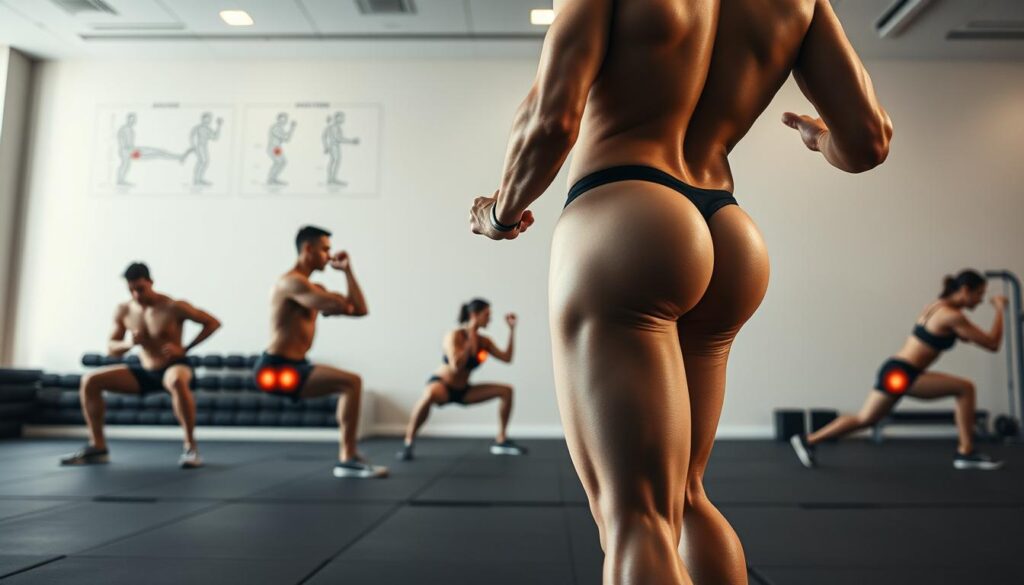
Hip Extension and Abduction Techniques
Hip extension and abduction are two key techniques for engaging the lower body. Hip extension involves pushing the hips forward, while abduction focuses on moving the leg away from the body. Both movements are crucial for activating the posterior chain.
When performing these exercises, proper form is critical. Start from the floor, ensuring your feet are firmly planted. Keep your shoulder aligned with your hips to maintain stability. Adding weight can increase intensity, but always prioritize control over speed.
- Hip Extension: Focus on driving through the heels and squeezing at the top of the movement.
- Abduction: Keep a slight bend in the knee to protect the joint and maximize muscle activation.
These techniques can be adapted to both free-weight and body-weight workouts. For example, using a resistance band during abduction adds extra challenge. Similarly, holding a dumbbell during hip extension increases resistance and enhances results.
By incorporating these strategies, you can ensure balanced strength and reduce the risk of injury. Remember, a slight bend in your movements can make a big difference in muscle engagement and safety.
Maintaining Proper Form and Alignment
Proper form is the backbone of any effective lower body routine. It ensures safety, maximizes results, and prevents injuries. Without it, even the best exercises can lead to imbalances or strain.
One of the most common mistakes I’ve seen is misalignment of the heel. When your heel isn’t properly grounded, it shifts the load to other areas, reducing effectiveness. Always ensure your heel is firmly planted during movements like squats or lunges.
Another frequent error is incorrect 90-degree angles. Whether it’s in your knees or hips, failing to achieve this angle can compromise your form. For example, during a lunge, your front knee should form a 90-degree angle with your thigh parallel to the floor.
Improper hand placement is also a culprit. During exercises like bridges or hip thrusts, your hands should support your body without bearing too much weight. This ensures your lower body does the work.
Common Mistakes to Avoid
Here are some techniques I use to maintain proper form:
- Check your heel position before starting any movement.
- Use a mirror to ensure your knees and hips form a 90-degree angle.
- Keep your hand placement neutral to avoid unnecessary strain.
- Engage your core to stabilize your lower body.
Self-assessment is key. I often use a mirror or ask a workout partner to observe my form. This helps me catch mistakes early and make adjustments on the spot.
By focusing on proper alignment, you can avoid compensation by other muscle groups. This ensures your target muscles are fully engaged, leading to better results and fewer injuries.
Designing a Balanced Glute Workout Routine
Creating a balanced routine for the lower body has been a game-changer in my fitness journey. It’s not just about targeting one area but ensuring all muscles work together effectively. A well-structured plan helps prevent imbalances and maximizes results.
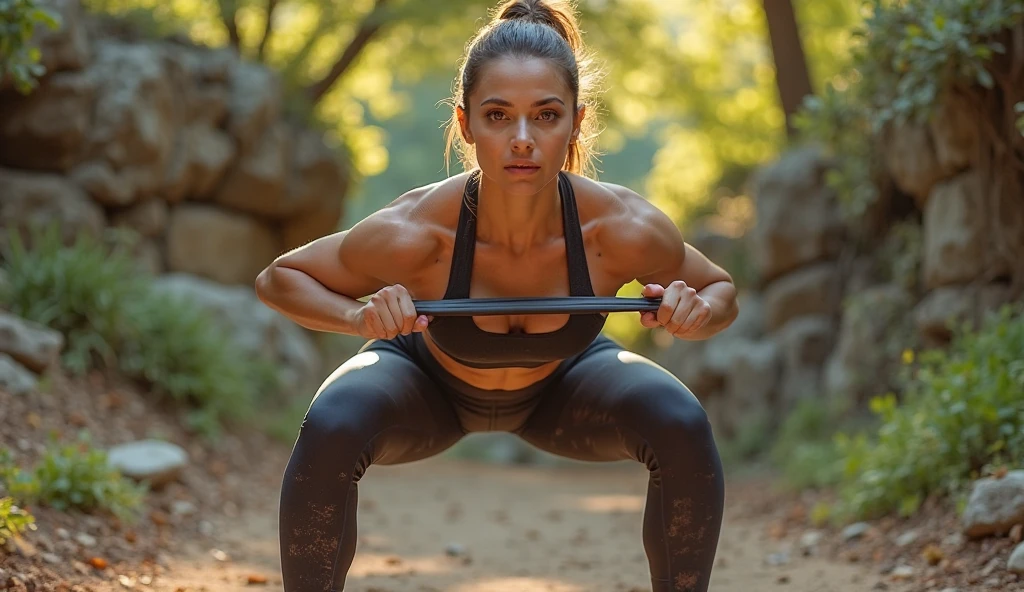
Structuring Your Weekly Training
I’ve found that dedicating specific days to different muscle groups works best. For example, I focus on compound movements like squats and lunges twice a week. These exercises engage the medius and other supporting muscles while keeping my knee bent at the right angle.
On alternate days, I incorporate isolation moves like clamshells to target smaller muscles. This approach ensures balanced development and reduces the risk of overtraining. I also leave enough time for recovery, which is crucial for muscle growth.
Incorporating Core and Lower-Body Work
Core strength is essential for stability during lower-body exercises. I always include planks or bird dogs in my routine. These moves help maintain proper form, especially when my knee bent position is critical.
For lower-body work, I focus on progressive challenges. Adding resistance bands or weights increases intensity over time. I also pay attention to the angle of my movements to ensure full muscle activation.
Here’s a sample weekly schedule I follow:
- Monday: Compound movements (squats, lunges)
- Wednesday: Isolation exercises (clamshells, donkey kicks)
- Friday: Core and lower-body focus (planks, bridges)
By planning my workouts this way, I’ve seen consistent progress. It’s all about finding the right balance and sticking to it over time.
Maximizing Results with Progressive Overload
Progressive overload has been a cornerstone of my fitness journey, helping me achieve consistent strength gains. This principle involves gradually increasing the demands on your muscles to stimulate growth. Whether it’s adding more resistance, increasing reps, or improving form, this method ensures continuous progress.
When I first started, I focused on mastering basic movements. Once I felt confident, I began adding small increments of resistance to challenge my body. For example, I started with bodyweight squats and eventually incorporated dumbbells. This gradual approach allowed me to build strength without risking injury.
Increasing Resistance and Reps Gradually
One of the most effective ways to apply progressive overload is by increasing resistance. I started with lighter weights and slowly worked my way up. For instance, during hip thrusts, I began with a 10-pound dumbbell and progressed to 20 pounds over several weeks. This steady increase kept my muscles engaged and growing.
Another strategy I use is adding more reps. If I could comfortably perform 12 squats, I aimed for 15 the next session. This not only improved my endurance but also enhanced my posture by strengthening my core and lower body.
Here’s how I structure my progressive overload routine:
- Start with a manageable weight or resistance level.
- Increase the load by 5-10% every two weeks.
- Add 1-2 reps per set as strength improves.
- Focus on maintaining proper form throughout each movement.
These small, consistent changes have made a big difference in my strength and posture. By challenging my body incrementally, I’ve avoided plateaus and continued to see results.
Controlled Progress for Injury Prevention
One of the biggest benefits of progressive overload is its role in injury prevention. By gradually increasing intensity, I’ve been able to avoid overtraining and strain. For example, when I added weight to my lunges, I ensured my arm position supported my balance, and my front knee stayed aligned with my toes.
This controlled approach also allows me to focus on proper alignment. Keeping my posture upright and my movements smooth ensures that I’m targeting the right muscles without unnecessary stress on my joints.
Over time, I’ve noticed significant improvements in my strength and stability. By prioritizing gradual progress, I’ve built a strong foundation that supports my fitness goals and reduces the risk of injury.
Supplementary Tips for an Effective Glute Workout
Achieving a stronger lower body requires more than just exercise—it’s about the right balance of effort and recovery. Over the years, I’ve learned that small, strategic steps can make a big difference in results. Here are some tips that have helped me stay on track and maximize my progress.
Nutrition, Recovery, and Motivation
Proper nutrition is the foundation of any successful training program. I aim for a protein intake of 1 gram per pound of body weight daily to support muscle recovery and growth. Adding an extra 100-300 calories to my diet helps build muscle without excessive fat gain.
Recovery is just as important as the workout itself. I ensure 48 hours of rest between heavy sessions targeting the same muscle group. This allows my muscles to repair and grow stronger. Staying motivated can be challenging, but setting small, achievable goals keeps me focused.
Tracking Your Progress Over Time
Monitoring progress is key to staying consistent. I use apps to log my reps, sets, and weights. This helps me see improvements over time and adjust my routine as needed. Tracking also keeps me accountable and motivated to push harder.
I pay close attention to details like back knee alignment and pelvis positioning during exercises. These small adjustments ensure I’m targeting the right muscles and avoiding strain. For example, keeping my back knee aligned during lunges protects my joints and maximizes effectiveness.
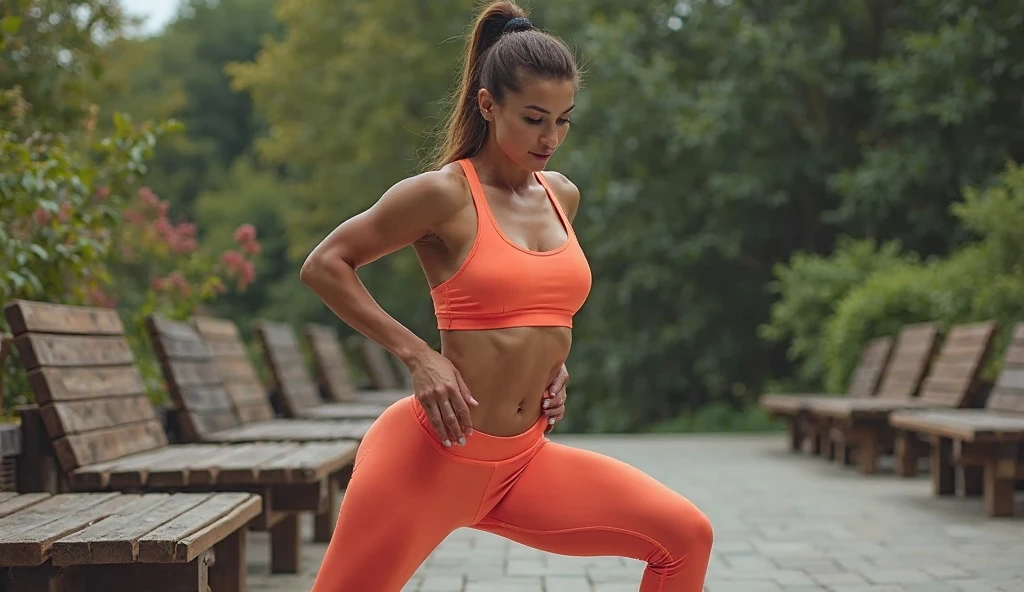
- Focus on protein-rich meals to fuel recovery.
- Allow adequate rest between sessions to prevent overtraining.
- Use apps to track progress and stay motivated.
- Pay attention to form, especially back knee and pelvis alignment.
By combining these strategies, I’ve seen consistent improvements in strength and endurance. It’s not just about the workout—it’s about the steps you take to support your goals.
Conclusion
Consistency and proper technique are the foundation of any successful fitness journey. Throughout this article, I’ve highlighted the importance of targeting the gluteus maximus and other supporting muscles to improve strength and posture. By incorporating exercises like the bridge and focusing on alignment, you can achieve balanced development and reduce the risk of injury.
A well-structured routine is key to maximizing results. Whether you’re performing compound movements or isolation exercises, paying attention to form ensures optimal muscle engagement. Tracking your progress and gradually increasing intensity through progressive overload will help you stay on the right line toward your goals.
Reflecting on my own journey, I’ve seen how these techniques transform not just physical shape, but overall confidence and movement efficiency. Stay dedicated, and remember—small, consistent efforts lead to lasting results. Your body will thank you for the effort you put in today.

